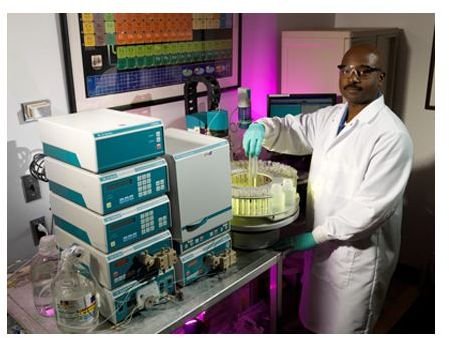Water Management for Manned Space Flight
Water as a Resource
As one may well imagine, water is a critical resource aboard spaceships. Any craft that must support life in space for extended periods must recycle and reuse every available resource. Water is very heavy, so the amount that could be placed aboard for initial blastoff, or ferried out into space to be added to the spaceship supply bit by bit would necessarily be limited. Also, it requires a great deal of space for storage — another factor that would limit the amount that could be placed on board a spacecraft. For this reason, the management of water and the recycling and reuse of water aboard a spaceship is a very important issue.
Many of the current technologies used to purify or recycle waste water here on Earth could also be used in space.
Modern Water Recycling Methods
Around the world, in dry regions and aboard ocean-going ships, a number of methods are used to recycle water. In order to make waste water, including sewage water drinkable again, the methods used can include freezing, distilling the water, reverse osmosis, ultraviolet light purification to kill viruses and bacteria, oxidation to disinfect water, microfiltration and ultrafiltration to filter out solid waste and larger bacteria, etc.
Reverse osmosis, microfiltration and ultrafiltration all entail forcing water under pressure through fine filter membranes. They differ only in the size of the pores in the filter membrane, and therefore the size of the molecules they allow through the filter. Reverse osmosis can reputedly remove up to 99% of all contaminants. The remaining solid waste can be composted for use in growing plants and food.
Freezing water to purify it requires that the water be frozen slowly. As ice crystals form, impurities are forced out of the crystal structure. Before all the water is frozen, remove the large block of ice, which should be pure water. This method will not necessarily kill all bacteria, however. This method can be used to create potable water from sea or salt water by effectively forcing the salt ions away from the freezing ice crystals. The chunk of ice in the salt water is pure water, and can be drunk once it is melted. This would be very energy efficient in spaceships where the surrounding space is well below freezing, and no energy would be lost in freezing waste water.
Distilling entails heating and boiling the waste water, and collecting and condensing the steam from the process. The steam cools and solidifies into water again, which can be reused as drinking water.
The final steps of water recycling require sterilizing the water to make sure all bacteria and viruses have been killed. Common methods are exposing the water to ultraviolet light, oxidation of the water, or the use of electrical microcurrents to kill germs and viruses.
Current Water Recycling in Space

The International Space Station (ISS) recycles both water and urine. The ISS is 226 miles away from Earth, and the cost of shipping water to the station is estimated at $15,000 a pint. Considering that, it is easy to see why recycling is a necessary part of daily life aboard the space station.
According to NASA, the wastewater is cleansed for reuse in a three step process. Step one filters out dust and particles. Step two passes the water through filtration beds that remove impurities. The third step is the catalytic oxidation reactor that removes harmful organic compounds, and kills bacteria as well as viruses.
The International Space Station also recycles water vapor from the astronaut’s breath. As astronauts breathe, their breath contains water vapor, which you can easily see when you breathe on a cold window in the winter and it fogs over. The water in the air is condensed out of the air for reuse as drinking water.
NASA claims that the drinking water produced by the recycling efforts aboard the ISS is very pure, and in fact is much cleaner and purer than water from any tap in the United States.
Rationing is also used aboard the International Space Station. Astronauts must content themselves with sponge baths instead of showers (if they even had one). This water is recycled too of course, as is water from personal hygiene like brushing teeth and washing hands.
The systems aboard the ISS are not 100% efficient, so some water is always lost. Thus, the ISS does inevitably require some resupply of water from Earth despite its space water management.
Future Technologies
Forward osmosis is similar to reverse osmosis, except that is does not put the water under pressure. Forward osmosis simply allows natural diffusion of water through the permeable membrane filter, but prevents bacteria, viruses and minerals from similarly diffusing through the filter membrane. It has already been tested by NASA on the Atlantis space shuttle as a future spacecraft water management system.
Resources
Triangular Wave Technologies. FAQs About Ultraviolet Water Disinfection, https://www.triangularwave.com/f3.htm
Australian Academy of Science. Making Every Drop Count, https://www.science.org.au/nova/095/095key.htm
NASA. Water on the Space Station, https://science.nasa.gov/science-news/science-at-nasa/2000/ast02nov_1/
Astrobiology Magazine. Recycling Water in Space, https://www.astrobio.net/pressrelease/4039/recycling-water-in-space
Photo credit: NASA’s Johnson Space Center’s Advanced Water Recovery Systems Development Facility (AWRSDF), courtesy of NASA.